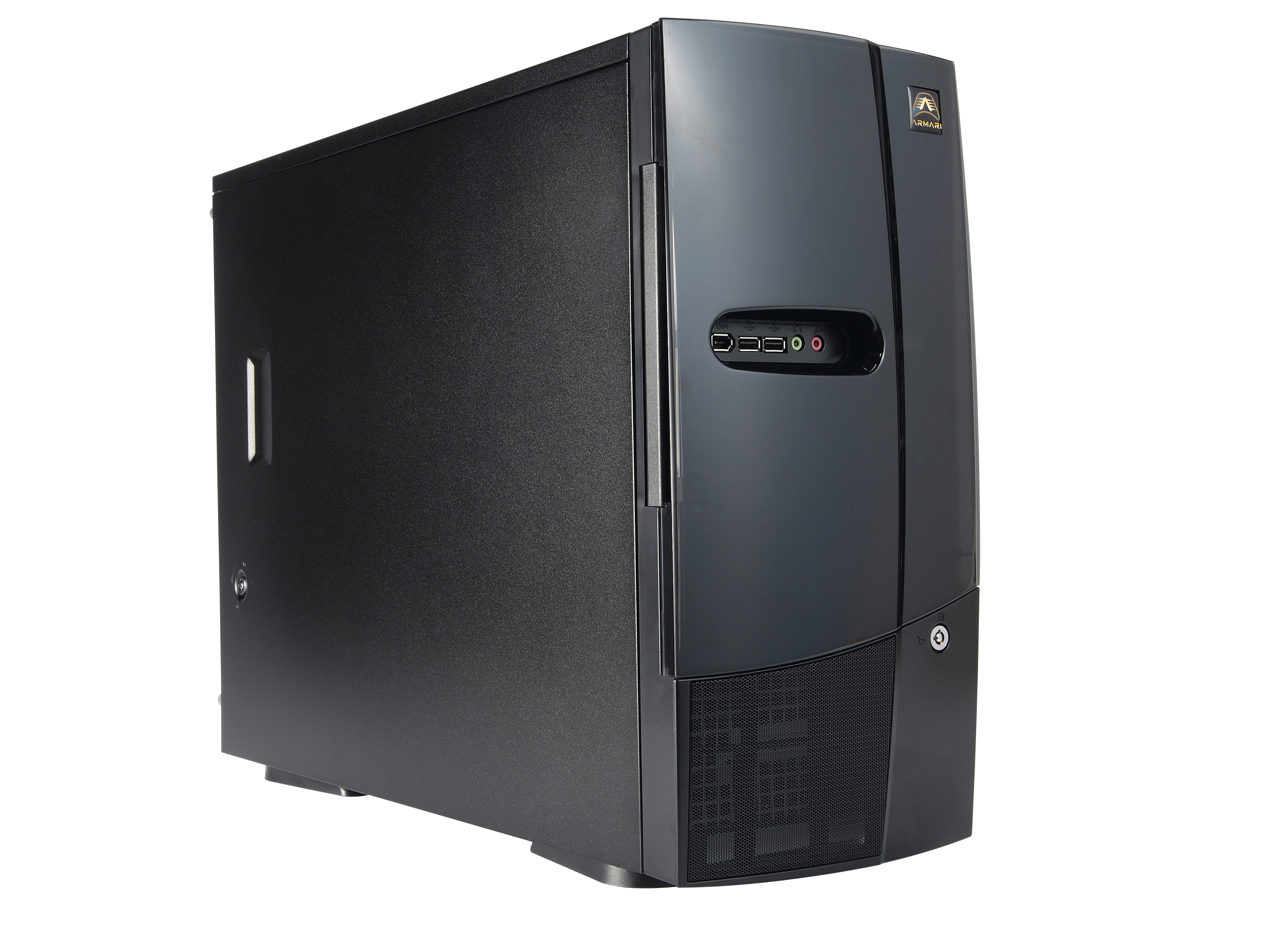TechRadar Verdict
If the price doesn't scare you off, this is an excellent workstation-class PC
Pros
- +
Superb features
Fantastic performance
Cons
- -
Ridiculous price
Why you can trust TechRadar
There are significant benefits to buying a workstation-class PC. First up, there's the general standard of manufacture. The whole unit in this case was wonderfully constructed, and internally it's by far the neatest, most presentable PC we've seen in many years.
Cables are all neatly clipped to the sides or trimmed to exactly the right length, and the water cooler is especially well presented. It's utterly understated, and probably the smallest example we've seen: a 120mm radiator sits between two similarly sized fans, and a few thin black pipes lead from it to the pair of conical black CPU modules.
There's very much an air of hard work and efficiency about the internals, bar a seemingly extraneous Southbridge fan which blows air perpendicular to where you'd assume it should go.
If you're spending the equivalent of half a car on a tiny bundle of electronics, it had better perform well. And you're in luck; the Clovertown strand of Xeon processors has been performing admirably in workstation and server-class machines since its release in late 2006.
The Xeon is constructed in fundamentally the same manner as Intel's current crop of consumer-level quad-core chips. A pair of dual-core Xeon dies sit side by side on a single chip, communicating with each other by a shared front side bus. Xeon, like the Core 2 range, is due an update to a proper quad-core die, as well as the 1333MHz FSB that could be its saving grace, sooner rather than later.
Undeterred by advancing technologies, we checked out Armari's processing monster using a pair of the latest generation of Clovertown chips, each running four cores at a blistering 3.0GHZ.
Our tests show that these chips significantly outgun the theoretically similar QX6800 in terms of sheer number-crunching potential.
Sign up for breaking news, reviews, opinion, top tech deals, and more.
This is a likely result both of Armari's inclusion of 4GB RAM, and the 16MB Level 2 cache on offer to the processor pair, although it's important to point out that you can't quite buy these chips just yet; Armari will sell this machine sporting the current generation of 2.66GHz chips until the 3GHz line is officially released somewhere around July.
Graphics pros will be happy to see the latest Nvidia Quadro card included to deal with 3D applications. With a memory bandwidth of nearly 50GB/s, the Quadro really shines when it's pushed hard. It's passable in gaming, but it's really for pro work.
There's one minor issue, though, and it's one we've been crowing about for a while: multi-core support in software. You still aren't going to be able to milk optimal performance out of a multi-core workstation, unless you're lucky enough to use applications which can handle it.
There are certain benefits in terms of multitasking, and the ability to handle eight threads on eight different cores is certainly one that carries a lot of power, but the state of the application market isn't great when it comes to parallel processing.
The only real examples are packages from the art world, like Cinema 4D, which are coded in such a way that they can spread their load across each of the cores at once.
Viewing an image being raytraced, for example, shows the gulf between parallel and standard processing: the single core test chugs through, as the image appears neatly, spreading itself from top to bottom, while the eight-core test draws eight parts of the image at once, completing the task with incredible speed.
Eight times faster?
Our tests did highlight that the performance improvement between one and eight cores isn't an 8x speed increase.
Perhaps due to the increased overheads of parallel processing, or perhaps (as we're more inclined to suspect) one particular component in the chain can't handle the strain, but Cinebench's raytrace tests showed a speed increase of around 4x when ramped up to eight cores.
There's a definite curve to the results; perform the same test with two cores and you'll get a 2x improvement, re-attempt it with four cores and you'll see around a 3x jump.
Most importantly for this test, Armari has bested the shiny new Apple Mac Pro. Only just, mind you; its Cinebench scores were consistently higher than those extracted from Apple's machine, but by less than one per cent. Considering the slightly higher price point, this is to be expected, but we question the choice of case.
The Mac comes in the same old Mac Pro case - unassuming but functional. Armari has, despite its brilliant attention to detail, chosen a case which looks and feels cheap, especially the flimsy translucent drive cover dangling from the front. Forget that one shaky part, however; this is an all-powerful machine, brilliantly made. If only you could afford one.
